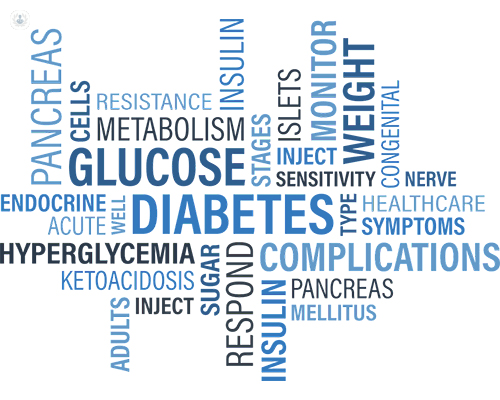CGM (continuous glucose monitoring)
Professor Pierre-Marc Bouloux - Endocrinology, diabetes & metabolism
Created on: 02-20-2019
Updated on: 02-13-2024
Edited by: Conor Dunworth
What is continuous glucose monitoring (CGMs)?
A continuous glucose monitor is a small device used by people with type 1 diabetes, which enables them to check their sugar (glucose) levels at any time. It allows diabetics to follow patterns and trends in their levels and sends an alert if the glucose is too high or low.

What is a continuous glucose monitor?
The device can be worn just under the skin. The CGM does not actually measure the blood glucose levels but the amount of glucose in the fluid (interstitial fluid) that surrounds the body cells. There is a small delay when the fluid is being checked and so the CGM result isn’t always exactly the same as a finger prick result.
What are the different types of continuous glucose monitors?
There are two different types of CGMs:
- Real time – sugar levels can be checked at any time and results can be downloaded.
- Retrospective – sugar levels cannot be seen in real time but the results are available to download later.
How does continuous glucose monitoring work?
There are three parts to a CGM. A sensor sits underneath the skin and measures the sugar levels. There is a transmitter that is attached to the sensor, which sends the levels to the display on the device. The third part of the CGM is the display device that shows the sugar levels and is usually a separate handheld device or a pump.
CGM also comes with software so that the patient can analyse their results and monitor patterns in their levels. The device is worn for up to seven days and then needs to be replaced and the new sensor is reattached to the transmitter.
How much does a CGM cost?
A rough idea as to how much a CGM costs is as follows:
- £1,000 – for a monitor without a pump
- £500 – for a monitor that works with an insulin pump
- £60 – for sensors, which last for two weeks.
Some clinics lend CGMs to help patients look at the patterns in their blood glucose trends if they are having trouble. The data can then be looked at with the doctor or nurse and they can advise the patient on the management of their diabetes. The availability of CGMS on the NHS varies throughout England as there is certain criteria as to who is eligible.

